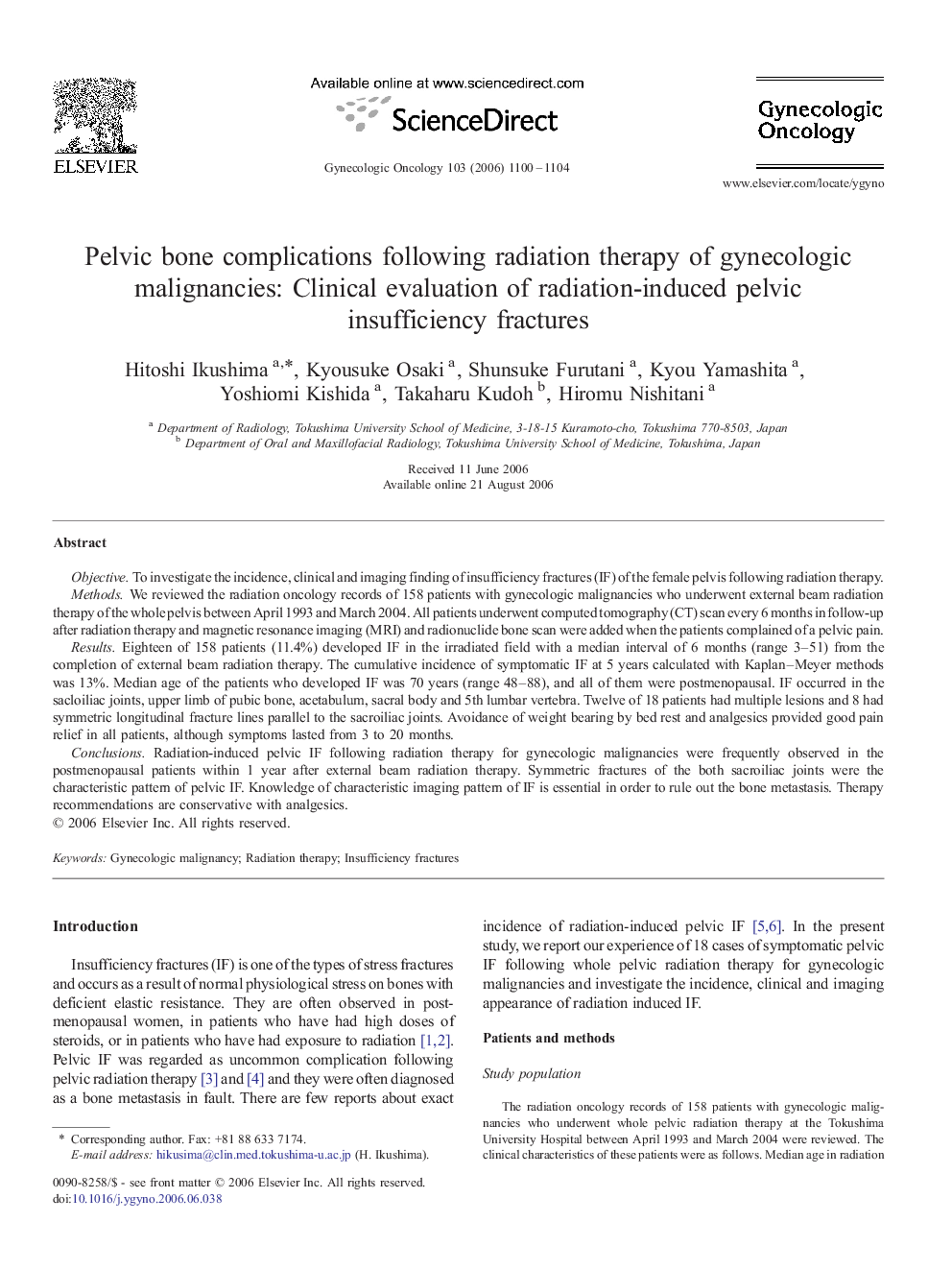| Article ID | Journal | Published Year | Pages | File Type |
|---|---|---|---|---|
| 3943675 | Gynecologic Oncology | 2006 | 5 Pages |
ObjectiveTo investigate the incidence, clinical and imaging finding of insufficiency fractures (IF) of the female pelvis following radiation therapy.MethodsWe reviewed the radiation oncology records of 158 patients with gynecologic malignancies who underwent external beam radiation therapy of the whole pelvis between April 1993 and March 2004. All patients underwent computed tomography (CT) scan every 6 months in follow-up after radiation therapy and magnetic resonance imaging (MRI) and radionuclide bone scan were added when the patients complained of a pelvic pain.ResultsEighteen of 158 patients (11.4%) developed IF in the irradiated field with a median interval of 6 months (range 3–51) from the completion of external beam radiation therapy. The cumulative incidence of symptomatic IF at 5 years calculated with Kaplan–Meyer methods was 13%. Median age of the patients who developed IF was 70 years (range 48–88), and all of them were postmenopausal. IF occurred in the sacloiliac joints, upper limb of pubic bone, acetabulum, sacral body and 5th lumbar vertebra. Twelve of 18 patients had multiple lesions and 8 had symmetric longitudinal fracture lines parallel to the sacroiliac joints. Avoidance of weight bearing by bed rest and analgesics provided good pain relief in all patients, although symptoms lasted from 3 to 20 months.ConclusionsRadiation-induced pelvic IF following radiation therapy for gynecologic malignancies were frequently observed in the postmenopausal patients within 1 year after external beam radiation therapy. Symmetric fractures of the both sacroiliac joints were the characteristic pattern of pelvic IF. Knowledge of characteristic imaging pattern of IF is essential in order to rule out the bone metastasis. Therapy recommendations are conservative with analgesics.
